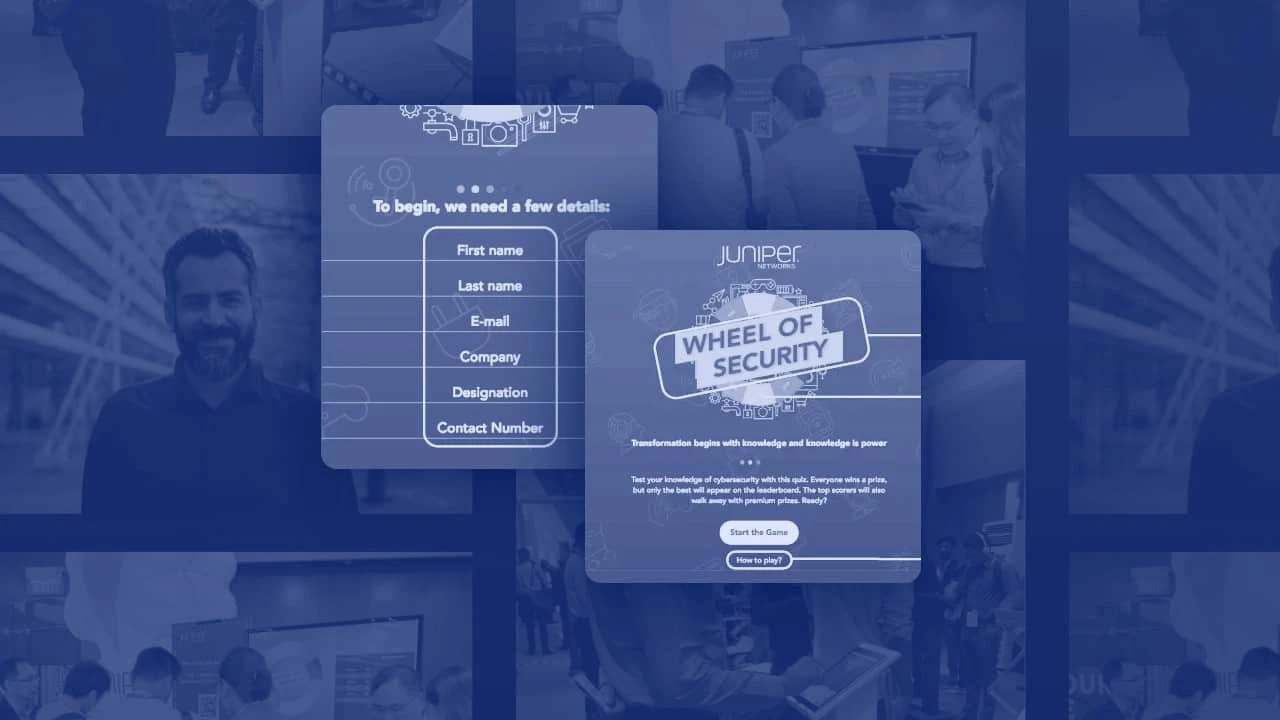In 2017, Juniper Networks’ content marketing lead Yash Suresh was on the hunt for a more effective way to boost lead generation and increase event marketing ROI. Field marketing, which drives a large part of the network company’s APAC marketing strategy, is resource-intensive. While past events had resulted in cost-justifiable benefits for the company, there was potential to extract so much more value and leads from each initiative. Yash’s team thus embarked on a mission to change the way they approached customers, beginning with their field marketing efforts.
Like many technology companies, Juniper Networks’ marketers use live events to create brand awareness and generate leads. The American-headquartered company, which sells routers, switches, network security, and network technology products, leverages events for product placements and education, as well as to build rapport with prospects and to gather customer feedback.
While event marketing is one of the most effective channels for lead generation, it is still executed rather traditionally, with much potential for automation/CRM.
The most common way for brand representatives to capture leads at events is still pen and paper, which creates data entry errors and a long delay before sales can follow up with qualified leads. Some of the most significant challenges faced, including outdated workflow, data errors, and lost leads, can easily be solved with automation.
These were some of the issues with field marketing that Yash wanted to tackle:
-
Improve attendee engagement
-
Better education on products & solutions
-
Reinforce value proposition
-
Automate lead collection process
-
Gather more feedback
With these in mind, Yash explored the idea of introducing game elements into their field marketing activities. He thought gamification would be a viable strategy because of its inherent ability to motivate attendees to participate in activities and to complete tasks. This led to Juniper Networks APAC’s first foray into gamification.
Gamifying customer experience
Playing games triggers the release of dopamine in our bodies, which translates into positive feelings of pleasure and enjoyment.
Although introducing a game at an event wouldn’t magically convert attendees into customers, Yash wanted to tap into this intrinsic ability to induce competition and increase engagement.
When it came to designing and engineering the game for upcoming trade shows, he and his team had to align real business objectives with the fun in games to maximise attendee engagement.
Here are a few types of games ideal for events:
Incentivising task completion
For example, brand representatives may give event attendees a free gift in exchange for their time and attention while showing them a demo. Awarding points to attendees for completing specific tasks — like visiting all the booths at the event — is more effective. Attendees can earn a spot on a leaderboard after accumulating points, and the friendly competition environment provides an incentive to complete the game.
Time-specific rewards
Encourage event attendees to interact with each other by introducing time-specific rewards. Or invite attendees to participate in a challenge at a specific time to earn a bonus. For example, try giving away prizes to the first 10 people who solve a puzzle within a specified period.
Community engagement
Improve participation and ownership at the event by allowing attendees to upvote questions during Q&A sessions or to participate in live polls.
On packaging solutions into quiz questions, Yash says, “Instead of asking someone to watch a demo at an event, we wanted to capture their attention by getting them to read our questions and solutions through the game.”
Game elements facilitate learning and help field marketers start conversations with customers at the booth.
Case Study: Wheel of Security
With all the requirements laid out, Yash and his team created the Wheel of Security quiz. We took a closer look at specific game elements to understand how they contributed to Juniper Networks’ success with gamification.
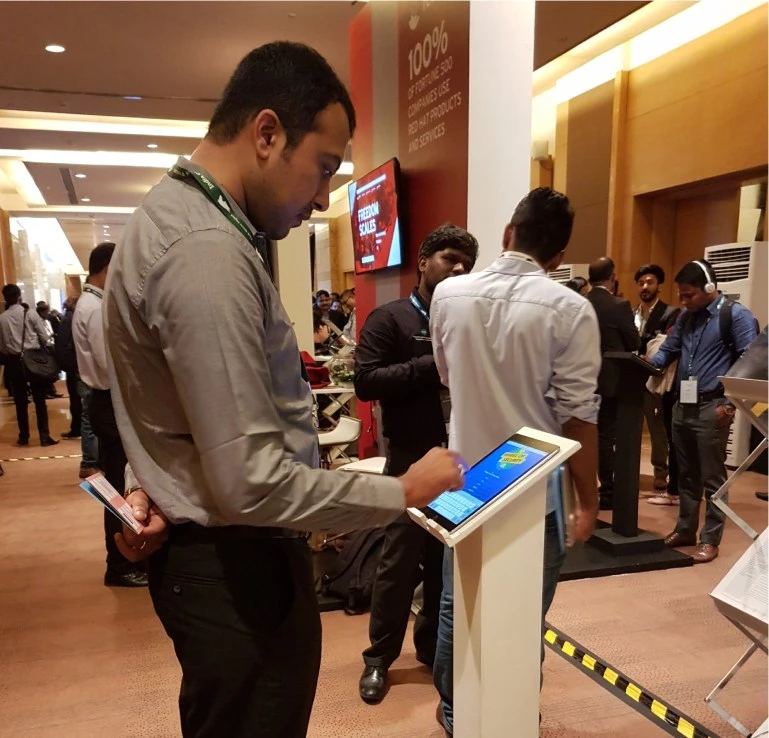
Create eye-catching landing pages
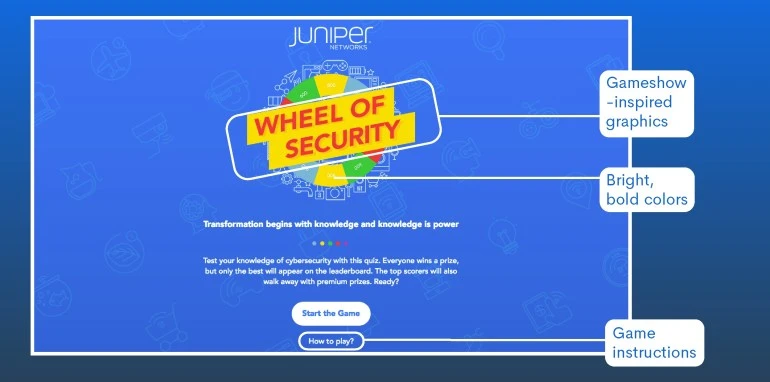
Bright and attractive colors pique the curiosity of event attendees. Furthermore, a clean game interface reinforces its simplicity to encourage user participation. In this case, the Wheel of Security resembles the classic TV game show Wheel of Fortune, which many users can relate to. The gameplay is as straightforward as it seems: spin the wheel, answer a question correctly to earn points, and repeat.
Key to unlocking value
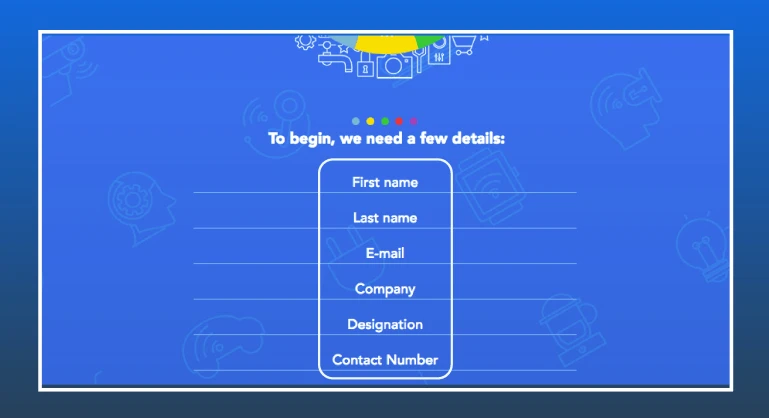
Placing the lead generation form here is strategic — to continue with the game, participants had to complete a lead-gen form. Once event attendees are enticed by the promise of an interactive game experience, they become more willing to share their contact information.
Craft engaging questions
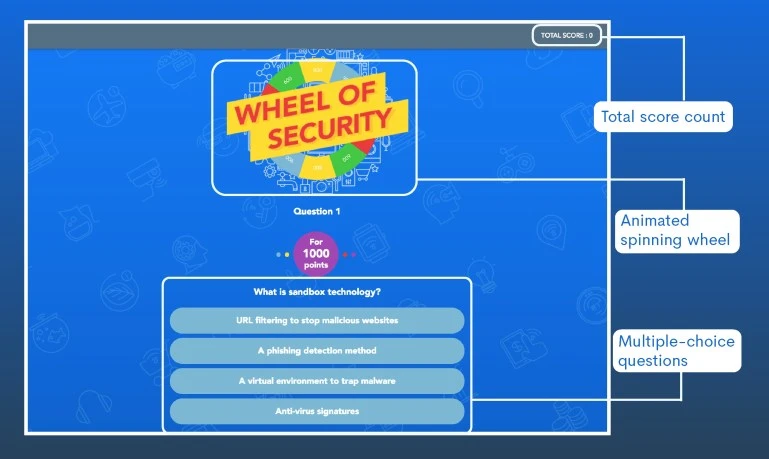
Working with subject matter experts within the company, Yash formulated questions for the game. Crafting the right questions is no easy feat – it has to be sufficiently challenging, but not compromise the user experience. Attendees were able to answer most questions with ease but were motivated to outdo others when it came to the harder questions. Introducing a challenge motivated event attendees to participate. Furthermore, one of Yash’s goals was to reinforce Juniper Networks’ security value proposition with eventgoers. Balancing all the different requirements required rounds of trial and error, as well as a deep understanding of their target audience.
Give participants incentives to move on to the next stage
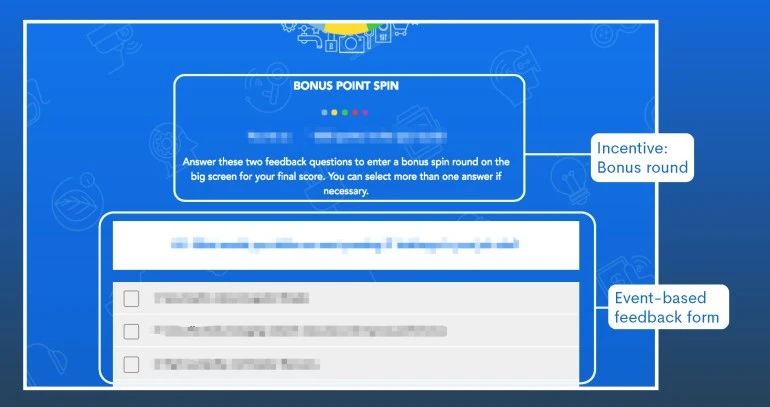
At the end of the quiz, game participants were asked to fill out a survey form. The incentive to complete the survey was a chance to appear on the leaderboard. After investing time in the game, event attendees were encouraged to finish it by “overcoming the final hurdle”, says Yash.
Through this, Yash and his team were able to do away with paper feedback forms while giving event attendees a fun and interactive experience. He says: “We found that quizzes were a lot more effective than just telling attendees, ‘Hey, fill in my form, and I’ll give you a free gift.”
Encouraging healthy competition with a leaderboard
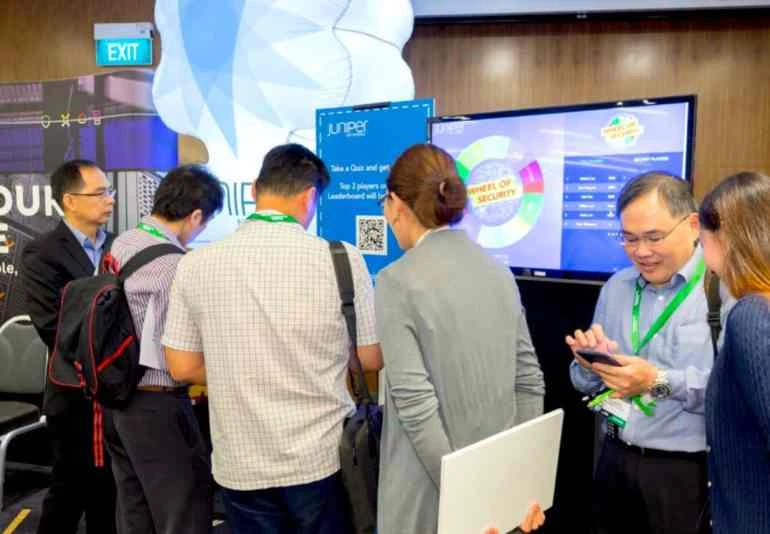
The leaderboard was projected on a larger screen and updated live as attendees attempted the quiz. More than enjoying a good challenge, attendees felt a sense of achievement from completing the game and seeing their names on the leaderboard.
Yash admits the positive response and engagement were a pleasant surprise. He says, “Just like how you see preschool kids today glued to their iPads; it’s been a surprise to see most of the professionals engaged and competitive in the same way while attempting our quizzes.”
Other Areas Of Gamification for Juniper Networks
Encouraged by the initial response from event attendees, Yash sought to apply the gamification strategy to other business processes to improve customers’ experience.
Demand Generation Campaign
With a subsequent product-specific marketing campaign, Yash took another swing at gamifying the lead-capturing process. He and his team created a dedicated page chock full of content about their new solution, SD-WAN, where they featured white papers, e-guides, and solution briefs.
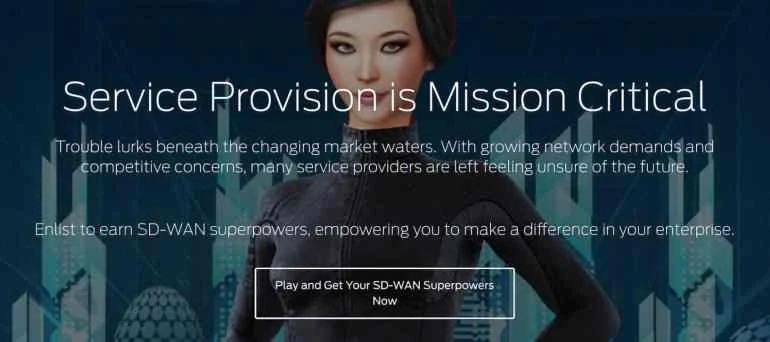
Instead of placing premium content behind a gate, prompting customers to leave their contact information in exchange for the downloadable content, Yash and his team enticed them with a game.
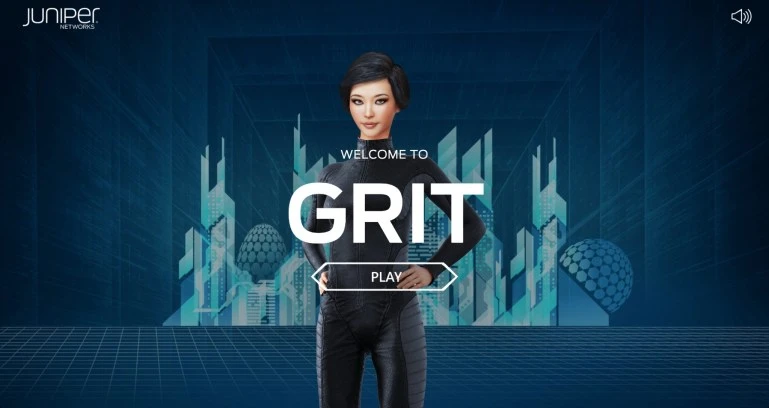
Keeping to a similar flow, the lead generation form was placed after the landing page of the game when prospective customers were already ‘hooked’. The logic behind the game is identical to that of the Wheel of Security. However, the purpose of the game was to educate prospective customers about Juniper Networks’ product offerings and benefits.
At the end of the game, players are led back to the campaign page. The game was an opening act, whetting the appetite of customers for more information about Juniper Networks’ new solution. On the campaign page, customers can download white papers and e-guides relevant to the product.
Distributor education and training
Yash and his team also applied the same techniques and game elements to improve the way Juniper Networks conducts training for its partners. To facilitate faster content absorption and retention, they designed a Juniper Mini Boot Camp Knowledge Quiz. The game was introduced after a training ‘boot camp’ to measure how much the partners have learned from the program.
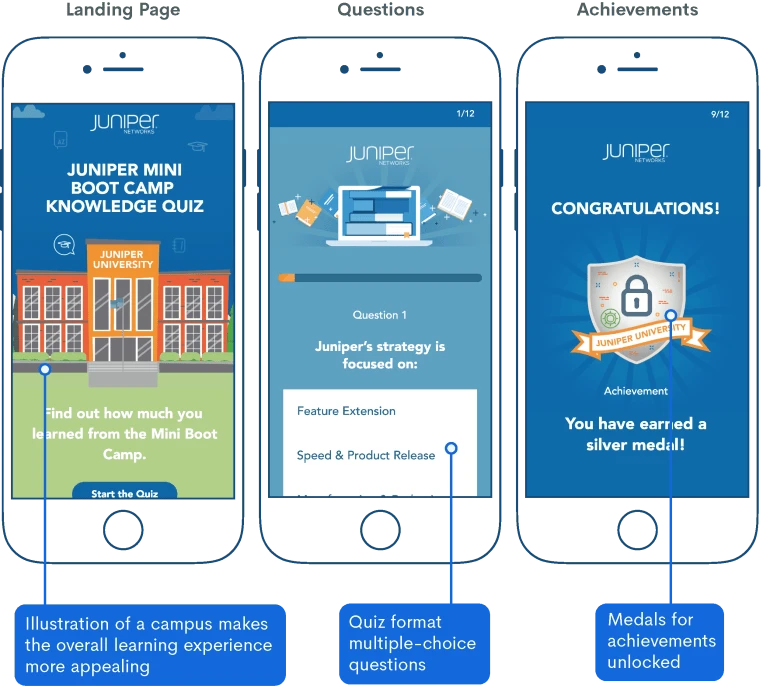
Participants are quizzed on Juniper Networks’ solutions and products specific to the training agenda. Correct answers are rewarded with medals, and all participants are placed on the leaderboard. These are similar game elements present in the Wheel of Security game and they promote healthy competition. In the case of training and education, it motivates sales executives to learn more about the products and do better at the quizzes. After the quiz is completed, an auto-generated email is sent to the participant with a certificate and directions to further learning on Juniper Networks’ on-demand learning portal.
Combine gamification with business goals
What underpins the strategy of gamification are simple game dynamics that most of us are familiar with — creating friendly competition and driving desired behaviors. Game elements like point systems and progress bars add to the game design. While it can be tempting to introduce game elements to all your marketing initiatives, the focus should be on improving customer experience.
Consider different game dynamics
Different game dynamics drive different behaviors in players. Whether it’s getting users to complete a series of tasks or giving them the opportunity to rank on a leaderboard, the game dynamic that you choose should meet your goals.
Pay attention to game elements
Draw attendees or participants to your game with straightforward rules and familiar game structures. Bold graphics and colours lure players to a game, but what gets players ‘hooked’ is the process of learning the gameplay. Once they are invested in the game, encouraging them towards a goal of completing a form or a survey becomes easier.
Use gamification to everyday processes
Examples of gamification elements appear in every day like LinkedIn profile completion (with a progress bar) and frequent flyer points. It’s easy to overlook these elements and their importance in driving customers toward desired behaviors. Begin by setting goals before introducing gamification.
Checklist
With all the possibilities of gamification, designing your own can seem like a daunting task. Here’s a quick checklist of questions to get you started:
LAY OUT YOUR OBJECTIVES
-
What are your objectives for the game?
-
What incentives do customers have?
-
What is the scope and nature of your campaign?
-
What is the call to action for customers?
SELECT A GAME STRATEGY THAT FITS
-
Should the game mechanics be time sensitive?
-
What kinds of incentives can you offer?
-
Do customers need to complete tasks?
-
What do your customers respond to?
TEST & REFINE
-
What are the corresponding metrics for your objectives?
-
Are your incentives strong enough?
-
Is it easy to understand and play?
-
Is the game too long or too difficult?
Now, game on!
Read more:
